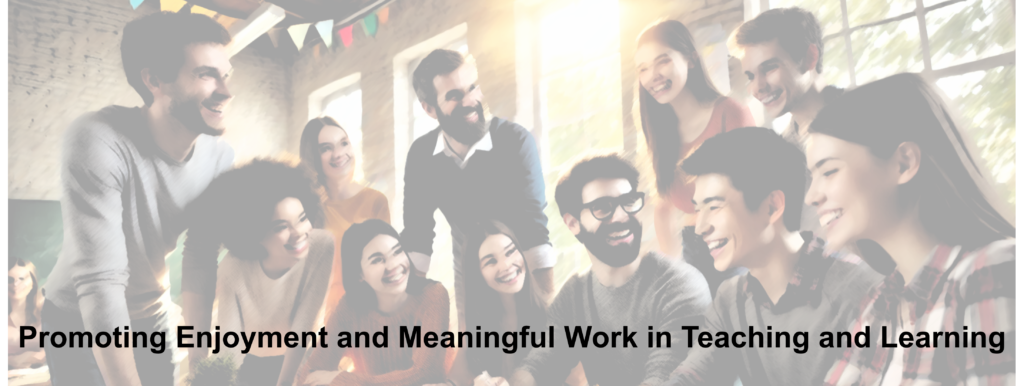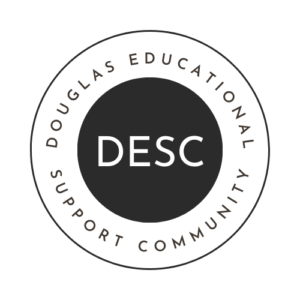
After three inspiring days at the Digital Pedagogy Lab 2025, which was hosted by BCcampus in partnership with Jesse Stommel and Kwantlen Polytechnic University. I find myself reflecting on what makes teaching and learning meaningful, equitable, and joyful. As I was in the Reimagining Assessment: Care and Community track, the following notes represent topics discussed in that break-out theme, led by Dr. Jesse Stommel and Dr. Martha Burtis. (Note: Paraphrased quotes from the track are in italics.)
Across conversations on grading reform, first-generation student success, and digital learning environments, a central theme emerged:
Assessment should not be a barrier to learning—it should be a bridge.
When we shift our focus from grades to growth, from compliance to curiosity, we create classrooms where students engage deeply, take intellectual risks, and connect learning to their own lives. We explored research-backed strategies and practical applications to bring into our own teaching practices.
First-Generation Students: Making Learning Purposeful
One of the most impactful discussions centered on first-generation students, who often approach college with a transactional view of education—where grades, rather than learning, are seen as the goal. Research on cultural capital gaps shows that these students may struggle with unspoken academic expectations, leading to anxiety and disengagement.
Practical applications to teaching
- Explicitly teach the hidden curriculum—Explain policies, feedback loops, and flexible deadlines.
- Reframe grades as markers of growth—Help students see assignments as opportunities for learning, not just evaluations.
- Build relational trust—Normalize asking for help and emphasize process over perfection.
Grades shouldn’t define a student’s worth—but for many, they’re tied to survival.
Classroom Environment: The Space We Teach In Matters
Classroom design influences engagement, equity, and participation in ways we often overlook. We had a lively discussion about how seating arrangements, lighting, and instructor positioning impact student interactions.
A few takeaways:
- Fixed seating and sterile environments discourage engagement.
- Flexible arrangements encourage discussion, collaboration, and accessibility.
- Instructor positioning matters—sitting among students reduces hierarchy and increases participation.
If we want students to be active learners, we need spaces that allow them to be.
Since this was a digital pedagogy lab, we also discussed the implications of digital environments, and ways to reduce hierarchical and sterile online environments.
Bias in Grading: The Halo Effect & Hidden Prejudices
Grading is never neutral. A meta-analysis of 1,935 graders found that bias—often unconscious—shapes how we evaluate student work.
Common biases in grading:
- The Halo Effect – If a student has done well before, their future work may be viewed more favorably.
- The Reverse Halo Effect – Students who challenge grades or struggle early on may be judged more harshly.
- Bias from transcript access – Knowing a student’s GPA, financial aid status, or past performance can subtly influence assessment.
How to Reduce Grading Bias:
- Blind grading – we discussed the pros and cons of this, and the ways in which bias can creep into even blind grading
- Shift from “points lost” to mastery-based rubrics.
- Provide feedback before giving a grade. Also, keep feedback and grading separate; students often don’t consider the feedback important if it is adjacent to the grade.
Bias in grading isn’t just about race or gender—it’s about power, perception, and relationships.
Shifting from Grades to Meaningful Feedback
One of the most practical insights from the Assessment track was how to decenter grades and make feedback the focal point of learning.
Effective feedback strategies:
- Process letters – Students reflect on their work before receiving a grade.
- Self-assessment + instructor feedback – Encourages students to take ownership of their progress.
- Feedback-first grading – Delays grading to allow students to focus on improvement rather than points.
When grades are the focus, students ignore feedback. When feedback is the focus, grades become secondary.
Redesigning Assignments for Intrinsic Motivation
A final, critical discussion centered on how we design assignments to spark curiosity and intrinsic motivation.
Practical strategies:
- Reframe assignments – Instead of “This is worth 20% of your grade,” say: “This helps you develop X skill, which prepares you for Y challenge.”
- Use mastery-based grading – Encourage students to improve over time rather than chase perfection.
- Incorporate self-reflection – Ask students to set learning goals and evaluate their own growth.
Education isn’t about sorting students into winners and losers—it’s about empowering every learner to thrive.
A Call to Action: Redefining Success in the Classroom
Grading reform isn’t just about changing policies—it’s a philosophical shift. It asks us:
- Do my assessments foster learning or just compliance?
- Do my grading practices reflect my values or institutional habit?
- Am I creating conditions where all students—not just the privileged—can thrive?
Teaching should be a space of intellectual excitement, deep engagement, and genuine curiosity. The more we humanize assessment, remove unnecessary barriers, and promote student agency, the more we create joyful, meaningful learning experiences.
I left this conference energized and committed to these shifts—not just for my students, but for the future of teaching and learning itself.
Because education is more than a transcript—it’s about transformation. And when we shift our focus from grades to growth, we empower students to become thinkers, not just performers.
Resources we used in the Reimagining Assessment track
Critical Digital Pedagogy: A Collection
Pedagogies of Care (Dr. Stommel’s slides)
OCR-Enabled PDF of Pedagogies of Care Slides
Start by Trusting Students: Pedagogies of Care in the Age of Artificial Intelligence (slides)
Ungrading and Alternative Assessment
Ungrading for Equity (OCR-Enabled PDF)
Book: Undoing the Grade: Why We Grade and How to Stop
Designing for Care Slides: Pedagogies of Care
OCR-Enabled PDF of Pedagogies of Care Slides
Twitter thread with a collection of my writing and interviews about ungrading.

Leave a Reply